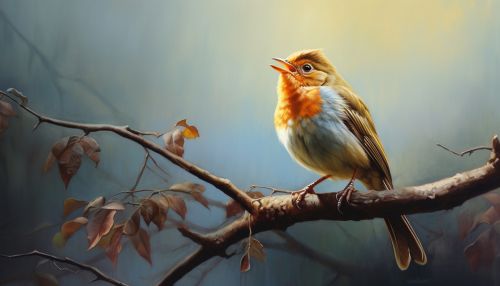Bioacoustics
Introduction
Bioacoustics is a cross-disciplinary science that combines biology and acoustics. Usually it refers to the investigation of sound production, dispersion and reception in animals, including humans. This involves neurophysiological and anatomical basis of sound production and detection, and relation of acoustic signals to the medium they disperse through. The findings of this science are used in many fields including wildlife management, animal husbandry, and animal therapyAnimal-Assisted Therapy. It is also used in biomimeticBiomimicry design principles where technology imitates nature.
History
The history of bioacoustics dates back to the ancient Greeks who had understood that sound was important in the life of animals. Aristotle in his book "Historia Animalium" noted that each species of birds had its own song. However, the term "bioacoustics" was coined in the 1950s by the Swedish neuroethologist Karl von Frischvon Frisch, Karl.
Sound Production
Animals produce sound for various reasons and these sounds are produced in different ways. In mammals, sound is produced in the larynx, a part of the throat. Birds produce sound using the syrinx, a vocal organ located at the base of a bird's trachea. Fish produce sounds by grinding their teeth or by contracting muscles that vibrate their swim bladder. Insects produce sound by stridulation, which is the act of producing sound by rubbing together certain body parts.


Sound Reception
Sound reception is the process by which animals receive and interpret sounds. This is done through specialized organs known as ears in most animals. However, some animals, such as snakes, do not have ears and instead perceive sound through their jawbones. Fish and amphibians often use a lateral line system to detect movement and vibration in the surrounding water.
Sound Dispersion
Sound dispersion refers to the way sound waves spread out from their source. In air, sound waves spread out in all directions from the source. However, in water, sound waves are more directional and can travel much further. This is why marine mammals such as whales and dolphins can communicate over great distances.
Applications
Bioacoustics has many practical applications. In wildlife management, it is used to monitor populations and track animal movements. In animal husbandry, it is used to improve the health and productivity of livestock. In animal therapy, it is used to calm and soothe animals. In biomimetic design, it is used to create technology that mimics the natural world.
Challenges and Future Directions
Despite its many applications, bioacoustics also faces several challenges. These include the difficulty of recording and analyzing sounds in complex environments, the need for more research on the impact of human-generated noise on wildlife, and the need for more interdisciplinary collaboration. However, with advances in technology and a growing recognition of the importance of sound in the natural world, the future of bioacoustics looks promising.
